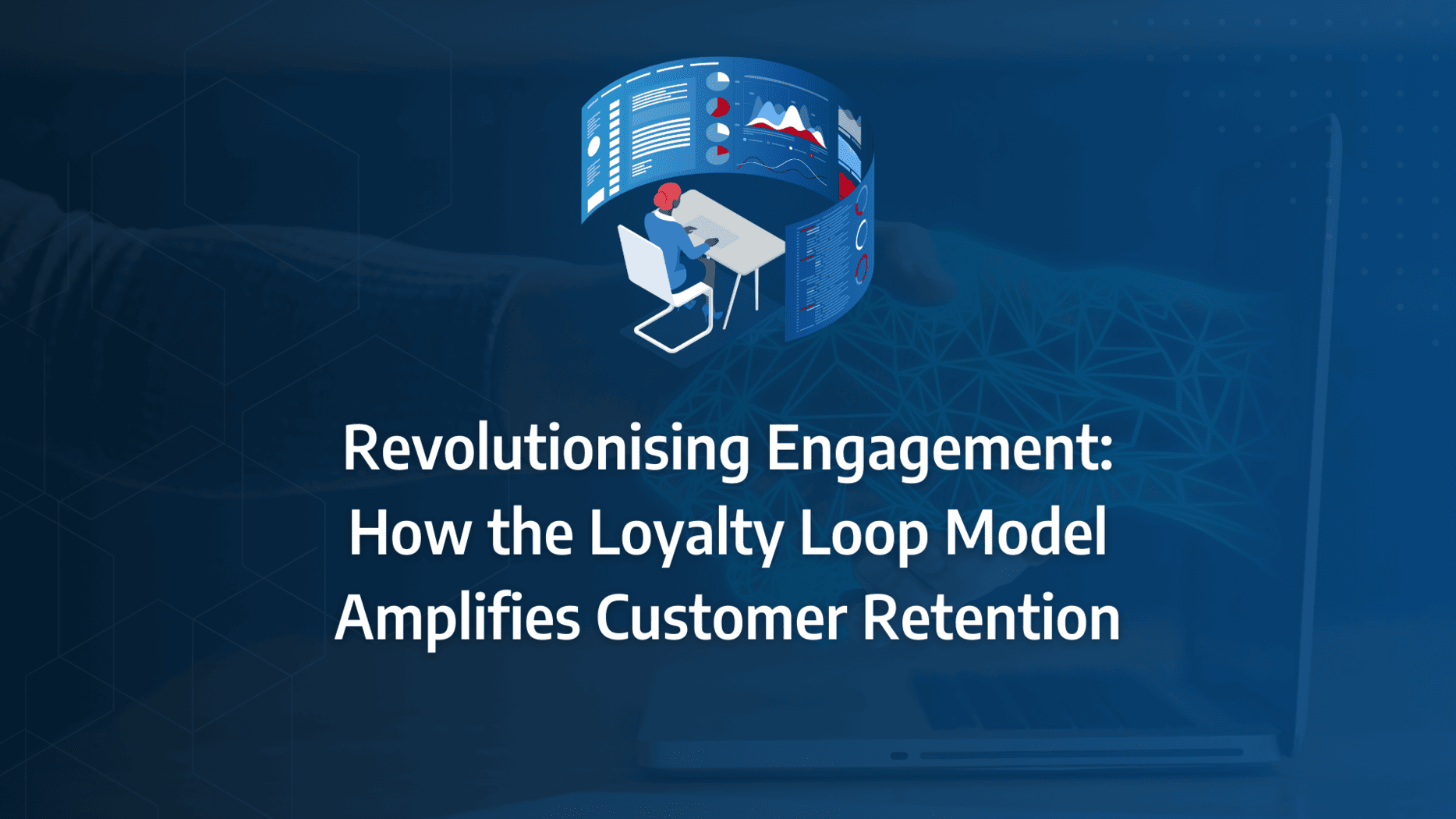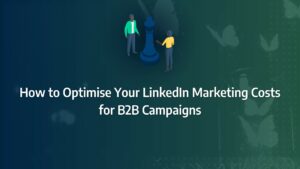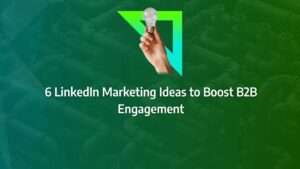Retaining customers has become just as important as acquiring them. The Loyalty Loop model offers a transformative approach to customer retention, shifting the focus from short-term gains to long-term relationships. Imagine a process where every interaction strengthens your bond with customers, encouraging repeat purchases and fostering brand loyalty.
This isn’t just a theory—it’s a proven strategy that can revolutionise your customer engagement efforts. In this guide, we’ll walk you through the Loyalty Loop model step by step, showing you how to turn one-time buyers into loyal advocates for your brand.
- Understand the Loyalty Loop: The Loyalty Loop model focuses on continuous customer engagement post-purchase, ensuring customers return and remain loyal.
- Implement Post-Purchase Engagement: Prioritise engaging customers after they’ve made a purchase, using personalised follow-ups and tailored offers to keep them connected with your brand.
- Leverage Data Analytics: Utilise data to understand customer behaviour and tailor your engagement strategies to meet their specific needs and preferences.
- Integrate with CRM Systems: Incorporate the Loyalty Loop into your CRM to track customer interactions and identify opportunities for further engagement.
- Create Tailored Loyalty Programs: Develop loyalty programs that offer unique rewards and create a sense of community, further deepening customer relationships.
- Address Challenges Head-On: Prepare for challenges in data management and customer segmentation by investing in robust tools and training your team on customer-centric approaches.
What Are Loyalty Loops?
The customer loyalty loop is a strategic concept illustrating how customers make purchasing decisions and their ongoing commitment to those choices. Essentially, it acknowledges that after a purchase, customers continuously reassess whether their decision was correct, contemplate recommending the product to others, and consider if they will repurchase.
What Matters Most?
In our work, the most effective loyalty loops are built on consistent and emotionally resonant customer experiences. Clients often discover that brand advocacy is driven by customers who feel personally connected to the company. This emotional bond typically comes from exceeding customer expectations and creating memorable interactions that build trust. Additionally, embedding customer-centricity into every department ensures that no touchpoint is disconnected, strengthening the loyalty loop. Focusing on long-term customer lifetime value is critical, as understanding customers’ evolving needs enables companies to proactively fulfil them before competitors step in.Get In Touch
A well-structured loyalty loop commences with the customer acquisition stage. Here, businesses attract new customers through diverse marketing channels such as advertisements, promotions, or referrals. This initial stage is foundational, laying the groundwork for cultivating a loyal customer base.
During the acquisition phase, businesses deploy strategies to captivate potential customers and incentivise their first purchase. Tactics might include crafting compelling marketing campaigns, offering exclusive discounts, or harnessing the influence of word-of-mouth referrals.
Once new customers are on board, the engagement stage begins. This phase is characterised by interactions between the customer and the business through purchases, customer service interactions, or participation in loyalty programmes. The objective here is to nurture the relationship, transforming a one-time buyer into a repeat customer.
Effective engagement can manifest in various forms, such as providing exceptional customer service, offering personalised recommendations based on customer preferences, or ensuring a seamless and enjoyable shopping experience. By fostering engagement, businesses can cultivate loyalty and encourage repeat purchases.
These interactions seamlessly transition into the final stage of the loyalty loop: retention. In this phase, customers consistently choose the business over competitors and evolve into loyal advocates. Retention is the ultimate aim of the loyalty loop, symbolising the establishment of a long-term, mutually beneficial relationship between the customer and the business.
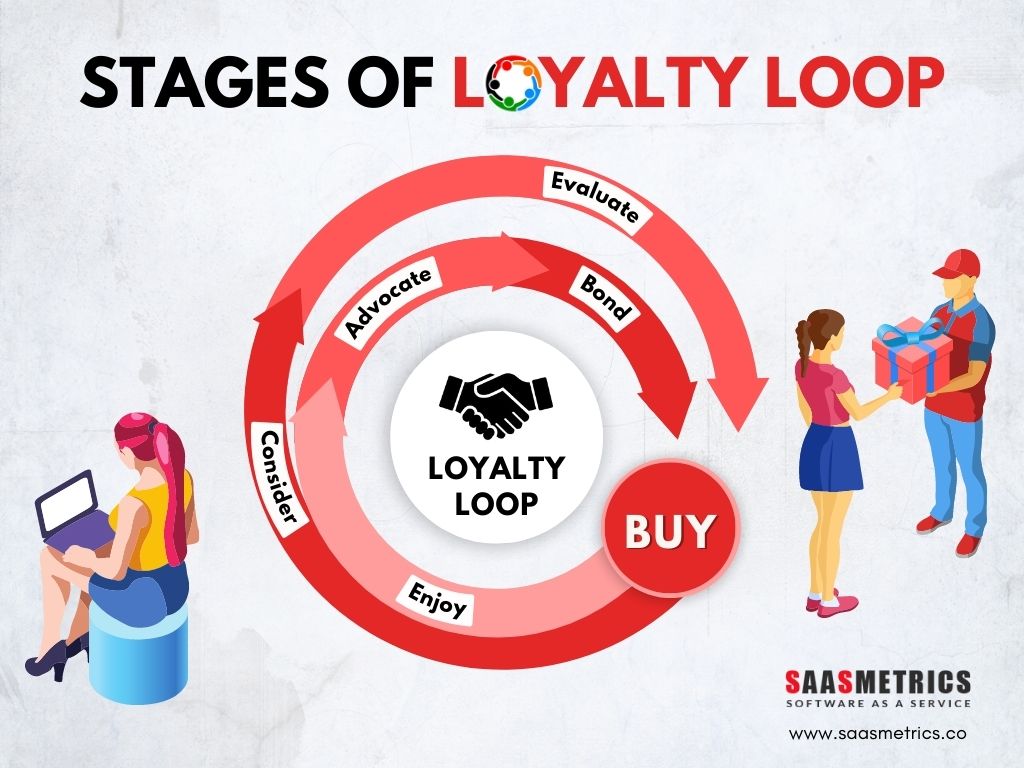
The Benefits of Implementing a Loyalty Loop
Deploying a loyalty loop strategy yields numerous advantages for businesses aiming to secure long-term success and a dedicated customer base.
Increased Customer Retention
One of the primary benefits of a well-implemented loyalty loop is enhanced customer retention. By focusing on building robust relationships and delivering exceptional experiences, businesses can inspire customers to remain loyal and continue selecting their brand over competitors. This reliable customer base provides a stable revenue stream and enhances business predictability.
Boost in Customer Lifetime Value
A strategically designed loyalty loop can substantially impact customer lifetime value (CLV), the total revenue a customer generates throughout their relationship with a business. Loyal customers typically spend more, make repeat purchases, and are more inclined to explore new offerings from a trusted brand. By fostering loyalty, businesses can elevate CLV and achieve higher profits.
Optimising the Loyalty Framework
Understanding and leveraging the customer loyalty loop is crucial for any business looking to thrive. By meticulously implementing each stage—acquisition, engagement, and retention—businesses can create a robust loyalty framework. This not only secures long-term customer relationships but also drives sustainable growth and profitability.
Source: Gartner
The Stages of the Loyalty Loop
Implementing a well-defined loyalty loop helps businesses pinpoint critical stages in a customer’s journey, allowing for tailored messaging and strategies at each phase. Let’s delve into the stages of the loyalty loop in detail.
Stage One: Consider
The primary aim at the consideration stage is to encourage prospective customers to share their data, feeding them into a nurture programme. This stage marks the beginning of your relationship with potential customers, where it is vital to communicate effectively and respond to their interactions in a relevant manner.
The focus here is on the value proposition for the prospect. Offer access to exclusive deals, news, support, and a comprehensive guide to the benefits of choosing your brand. Utilise channels such as email, downloads, and social media to provide this information.
Stage Two: Evaluate
At the evaluation stage, the primary goal is to secure the first purchase or use of your product. A crucial secondary objective is to keep prospects engaged with your brand, building trust and nurturing the relationship to ensure they recognise you as the right choice.
Consider these key elements to enhance the effectiveness of your loyalty loop:
- Craft Key Messages: Highlight not just your product or service but how effortless, straightforward, and risk-free it is to use.
- Build Trust: Use reviews and testimonials, not only on your website but also from external sources, to bolster credibility.
- Tailored Communication: Ensure your messages are specific to what the prospect has shown interest in. How relevant is your message to their particular needs?
- Adaptive Messaging: Recognise when prospects revisit your website or read your emails, and adapt your messages and product offerings accordingly (e.g., using browse abandonment emails).
Source: Hubspot
Stage Three: Buy
The objective during the purchase stage is to encourage a second purchase or use. At this point, customer engagement with your business is at its peak. The two critical factors influencing the customer are:
- Product Performance: How well does the product or service meet its promises?
- Ongoing Relationship: How effectively do you maintain the relationship through your marketing efforts?
Here are some tips for fostering customer loyalty at this stage:
- Personalised Messages: Avoid generic “buy/use again” messages.
- Express Gratitude: A simple “thank you” is often overlooked but crucial.
- Support and Guidance: Provide a welcome series on how to maximise the use of your product, and highlight ways your business can support them, such as customer service, online tutorials, and FAQs.
- Additional Recommendations: Suggest complementary products or services that add value.
Stage Four: Enjoy, Advocate, and Bond
As the customer continues to engage with your brand, you gather more data, allowing you to enhance your personalised marketing efforts. This ongoing relationship is crucial for long-term loyalty.
Consider these strategies to further engage and bond with your customers:
- Surprise and Delight: Send anniversary or birthday messages to wow your customers.
- Loyalty Rewards: Offer special promotions or deals to reward loyalty. For example, one free item for every five purchases.
- Encourage Engagement: Promote other ways customers can interact with your brand, such as through social channels, events, or your web app.
- Incentivise Referrals: Reward customers for recommending your products and services to their friends.
In an ideal scenario, this cycle perpetuates, with loyal customers continuing to purchase from you over the years. However, reality often diverges. Your CRM system can play a pivotal role in identifying when a customer starts to lapse (i.e., stops using your services) and can support efforts to win them back.
Optimising the Loyalty Loop
Define Your Loyalty Loop Metrics
A well-optimised loyalty loop forms the cornerstone of any robust customer retention strategy. It provides the framework for measuring success and understanding how effectively you are engaging your customers and fostering long-term loyalty.
A customer loyalty loop creates an entire ecosystem that drives user actions through rewards and recognition, akin to how casinos incentivise continued patronage through their loyalty programmes. Given that casinos have perfected their loyalty loops over centuries, adopting a similar strategy can be highly beneficial for businesses, especially in industries where brand loyalty can be fickle.
To effectively optimise your loyalty loop, focus on these key performance indicators:
- Customer Acquisition: Track the number of new customers joining your company each month. A high Customer Acquisition Cost (CAC) indicates that while you’re attracting new customers, you need to ensure they remain engaged and transition into loyal customers.
- Customer Lifetime Value (CLV): Measure the average revenue a customer generates over their lifetime with your business. This metric is crucial as it not only shows how much a customer spends but also their overall value. For businesses with multiple products, calculate CLV for each product to get a comprehensive view.
- Customer Engagement: Monitor the frequency of interactions per customer each month. This metric indicates how often customers use your product or service, providing insights into their engagement levels and potential loyalty.
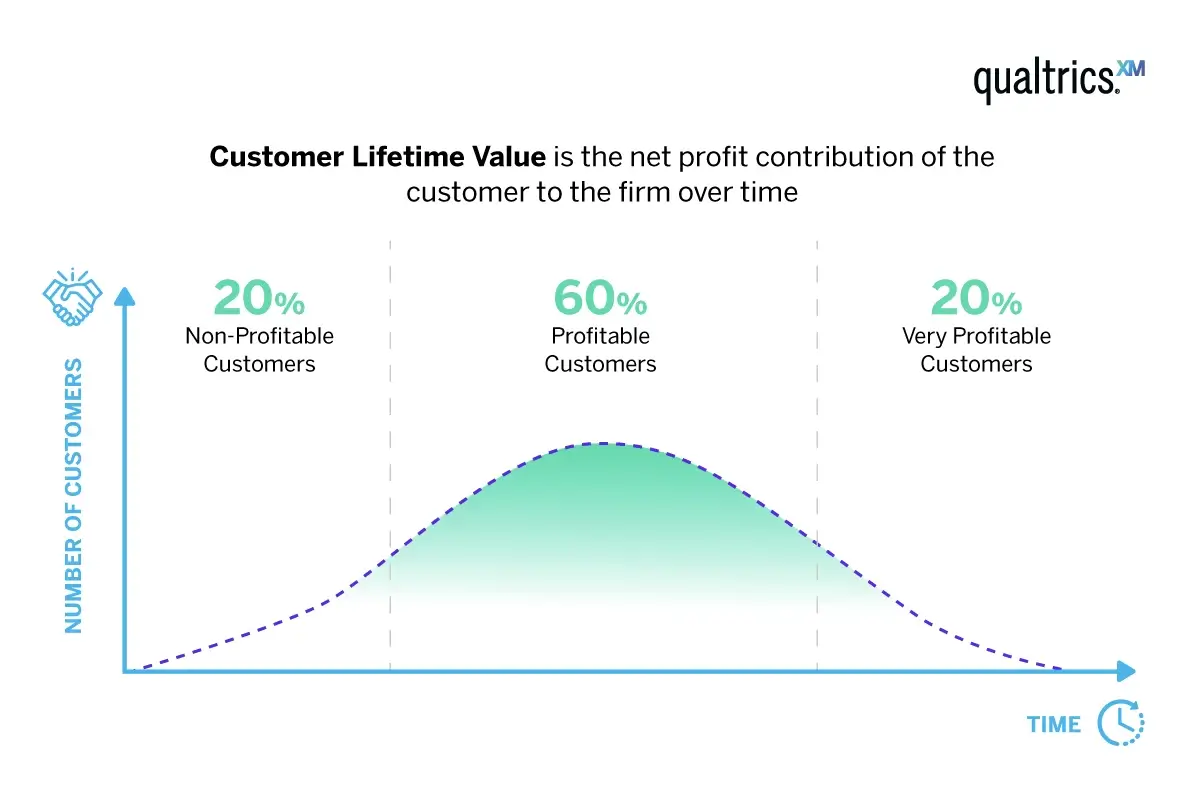
Gamify to Enhance User Behaviour
Gamification involves integrating game-like elements into non-game contexts to drive user behaviour. By using game mechanics, you can significantly improve user experiences, thereby increasing loyalty, engagement, and retention.
Implementing gamification into your loyalty framework might include:
- Points, Badges, and Leaderboards: Introduce a system where users earn points, achieve badges, or see their rankings on leaderboards. This not only encourages competition but also rewards users for their loyalty.
- Create Urgency and Scarcity: Use limited-time offers, countdowns, and flash sales to create a sense of urgency. These tactics can trigger the fear of missing out (FOMO), increasing the perceived value of your rewards. For instance, offering double points for a limited period or special rewards for the first 100 customers to redeem an offer can drive engagement.
- Align with Brand Values and Customer Needs: Ensure that your loyalty programme reflects your brand values and resonates with your customers’ needs. For example, an eco-friendly brand might offer rewards that support environmental causes, while a convenience-focused brand could provide time-saving benefits. This alignment makes the loyalty programme more relevant and attractive to customers.
By incorporating these elements, you create a loop loyalty program that is both engaging and effective. The key is to integrate these strategies seamlessly into your existing loyalty framework, ensuring they enhance the overall customer experience without disrupting it.
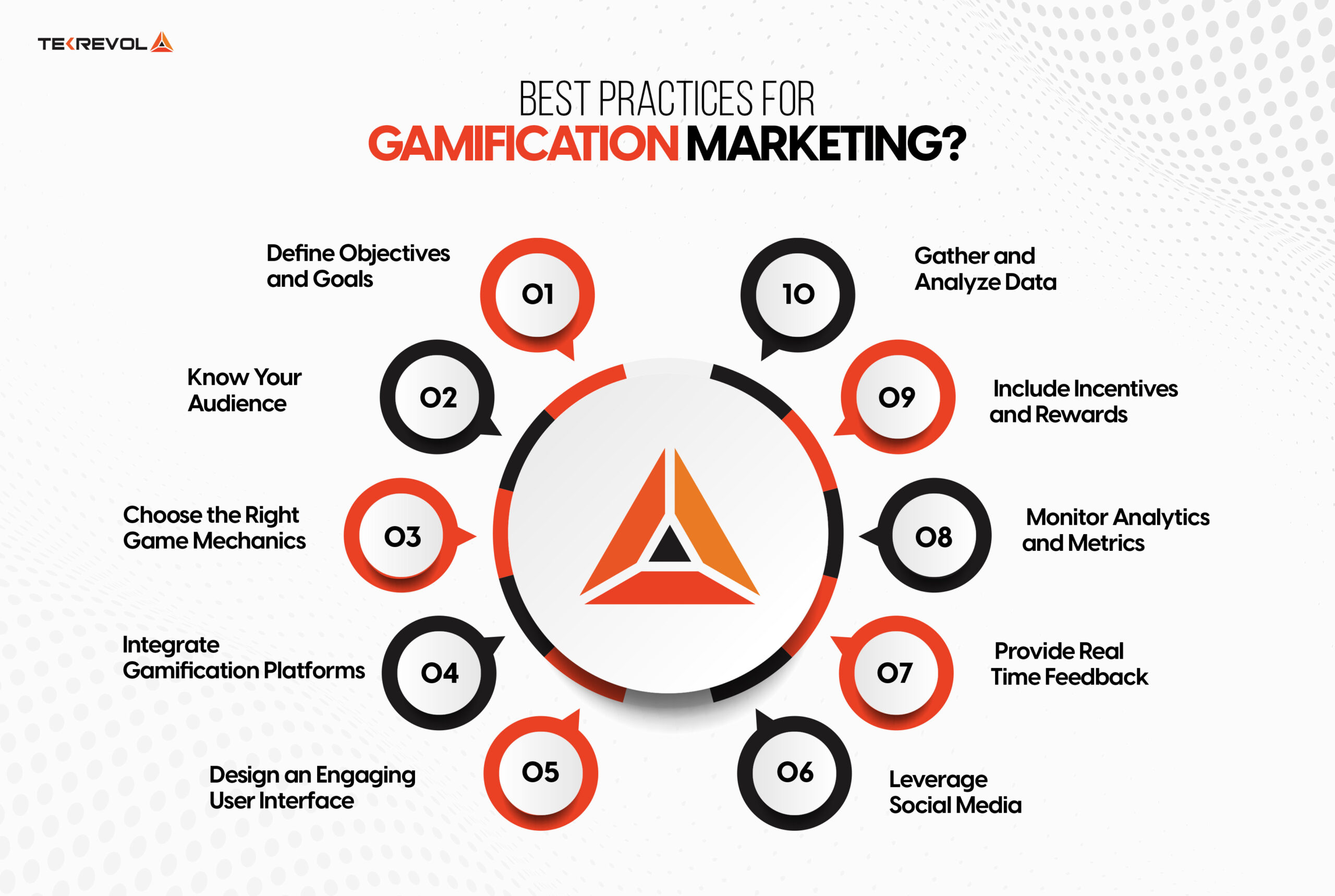
Our Tactical Recommendations
From our experience, clients often discover that integrating technology into the loyalty loop—such as AI-powered personalisation—helps automate touchpoints and deliver timely interventions that prevent churn. Establishing a feedback loop is essential; clients typically benefit from using customer input to make real-time improvements, thereby increasing engagement. Offering brand advocacy programmes that incentivise loyal customers to promote the brand also strengthens the loop.Get In Touch
Common Pitfalls and Challenges in Loyalty Loops
Insufficient Personalisation
Today’s customers expect personalised treatment from brands. Effective personalisation is essential for crafting memorable customer experiences and driving loyalty. Studies indicate that 63% of consumers abandon brands that lack personalisation, while 80% are inclined to engage with companies that offer tailored experiences. Moreover, 98% of marketers agree that personalisation strengthens customer relationships. Leverage data analytics to gain a deeper understanding of your customers’ behaviours, interests, and preferences. Use this data within your customer success tools and marketing campaign management systems to create more tailored and personalised experiences for your customers.
Neglecting Customer Feedback
To understand if your customers are satisfied with your products, support services, and overall brand experience, you must seek their feedback. Identifying friction points in their journey is crucial for improvement.
Ignoring regular feedback collection, tracking, and analysis means missing out on crucial insights needed to enhance your business. Consistently measuring customer sentiment and responding to their feedback is vital for customer retention.
Develop a robust customer feedback strategy if you do not have one. Begin collecting insights through Customer Satisfaction Score (CSAT) surveys, Customer Effort Score (CES) surveys, and Net Promoter Score (NPS) surveys. These tools provide a comprehensive understanding of your customers’ needs and satisfaction levels.
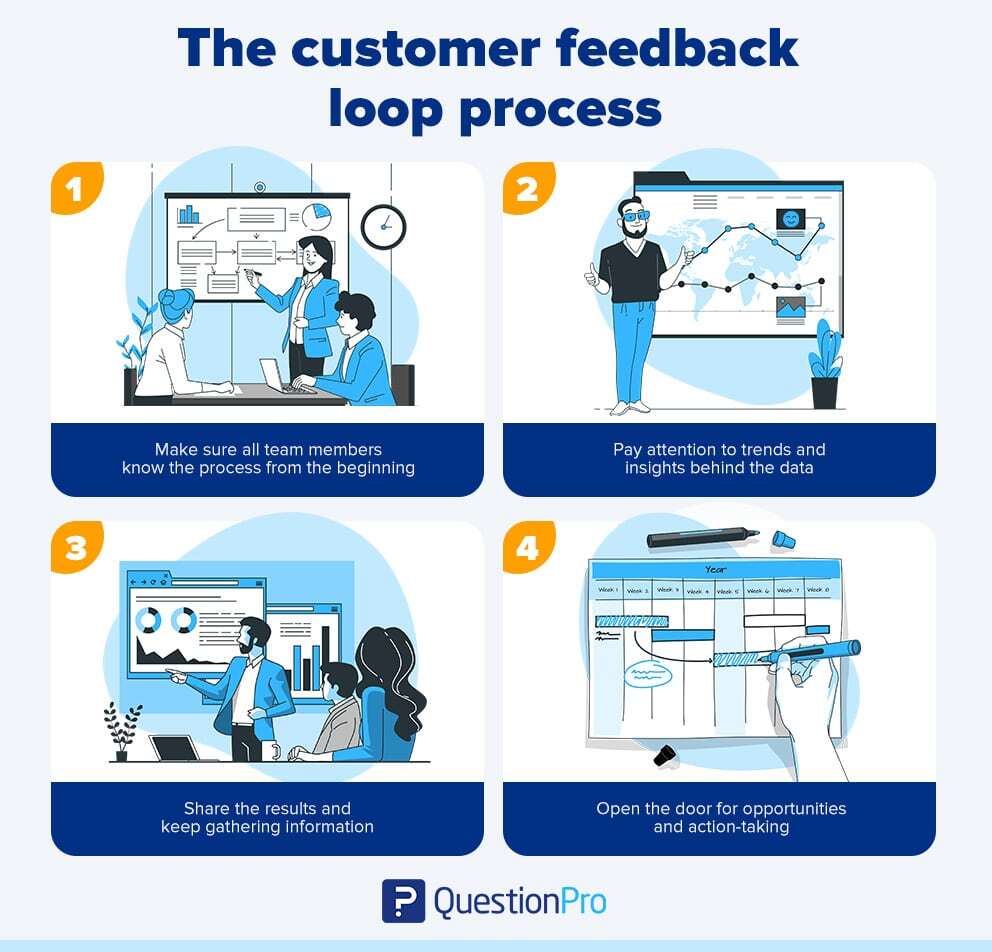
Rising Competition and Market Saturation
The modern marketplace is highly competitive, offering consumers more choices than ever before. This increased competition and market saturation make it challenging to maintain customer loyalty. To succeed, businesses must stand out with unique value propositions, innovative products or services, and exceptional customer experiences. Building strong brand loyalty through effective marketing strategies and a solid loyalty framework is critical.
Differentiate your brand by providing unique value and outstanding experiences. Implement innovative marketing strategies and a comprehensive loyalty loop to keep your brand competitive and attractive to customers.
Decrease in Customer Referrals and Recommendations
Customer referrals and recommendations are strong indicators of loyalty. Loyal customers naturally refer friends, family, and colleagues to a business. A decrease in referrals may indicate a decline in customer loyalty, which requires immediate attention.
Establish referral programmes, incentivise word-of-mouth marketing, and actively engage with existing customers to encourage positive recommendations. Monitor referral rates and analyse feedback to identify and address any negative trends.
Addressing these common pitfalls in your loyalty loop is essential for maintaining and improving customer loyalty. By delivering personalised experiences, leveraging customer feedback, differentiating your offerings, and fostering customer referrals, you can build a more resilient and effective loyalty framework. This approach not only enhances customer retention but also drives sustainable growth in a competitive marketplace.
